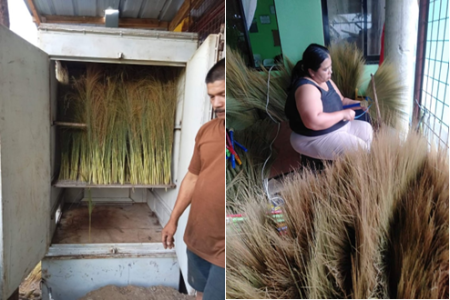Bio-oil Production and Energy Utilization of 5 Pine species Thailand | 23/04/2024
by Narumol Panunumpa, Somchai Nongnuang, and Suwanna Umphauk
Abstract
The study of bio-oil production and energy utilization of 5 pine specie aims to increase the efficiency usage of charcoal and wood and to enhance the Bio-oil production capacity of 5 pine specie. This study is conducted by collecting the samples of Pinus caribaea Morelet, Pinus tecunumanii Eguiluz & Perry, Pinus merkusii Jungh. & de Vriese, Pinus kesiya Royle ex Gordon, and Pinus oocarpa Schiede from Intakin Silvicultural Research station, Chiang Mai province. The samples were tested to find Charcoal production using an oil-tank shape 200 liter RFD single drum kiln. Charcoal and pine fuel were tested for their quality and efficiency usage with RFD1 type cooking stove and multipurpose type cooking stove, respectively. Another charcoal productions were processed by a torrefaction technique with a horizontal single drum kiln. Pine fuel and torrefied charcoal were grinded and compressed into fuel pallets. Pine fuel was also extracted to generate bio-oil. The results show that the charcoal production value was between 10.3-23.85% in which Pinus tecunumanii had the highest value and Pinus oocarpa had the lowest one. Heat Utilization of charcoal and of fuel were between 23.22-32.63% and 23.85-27.59%, respectively. Heat content of fuel pellets and of torrefied pellets were between 4,739-4,884 kcal/kg and 6,516-7,887 kcal/kg, respectively, and all of pellets was qualified passing PFI Standard. For bio-oil production, the amount of bio-oil extracted from 5 pine species were between 41.6-55.9% while the heat content of those were 3,175-5,774 kcal/kg and qualified with ASTM Burner Fuel. Thus, the conclusions of this experiment were all of 5 pine species had the potential energy, including charcoal, fuel wood, pellets, torrefied pellets, and bio-oil.
















